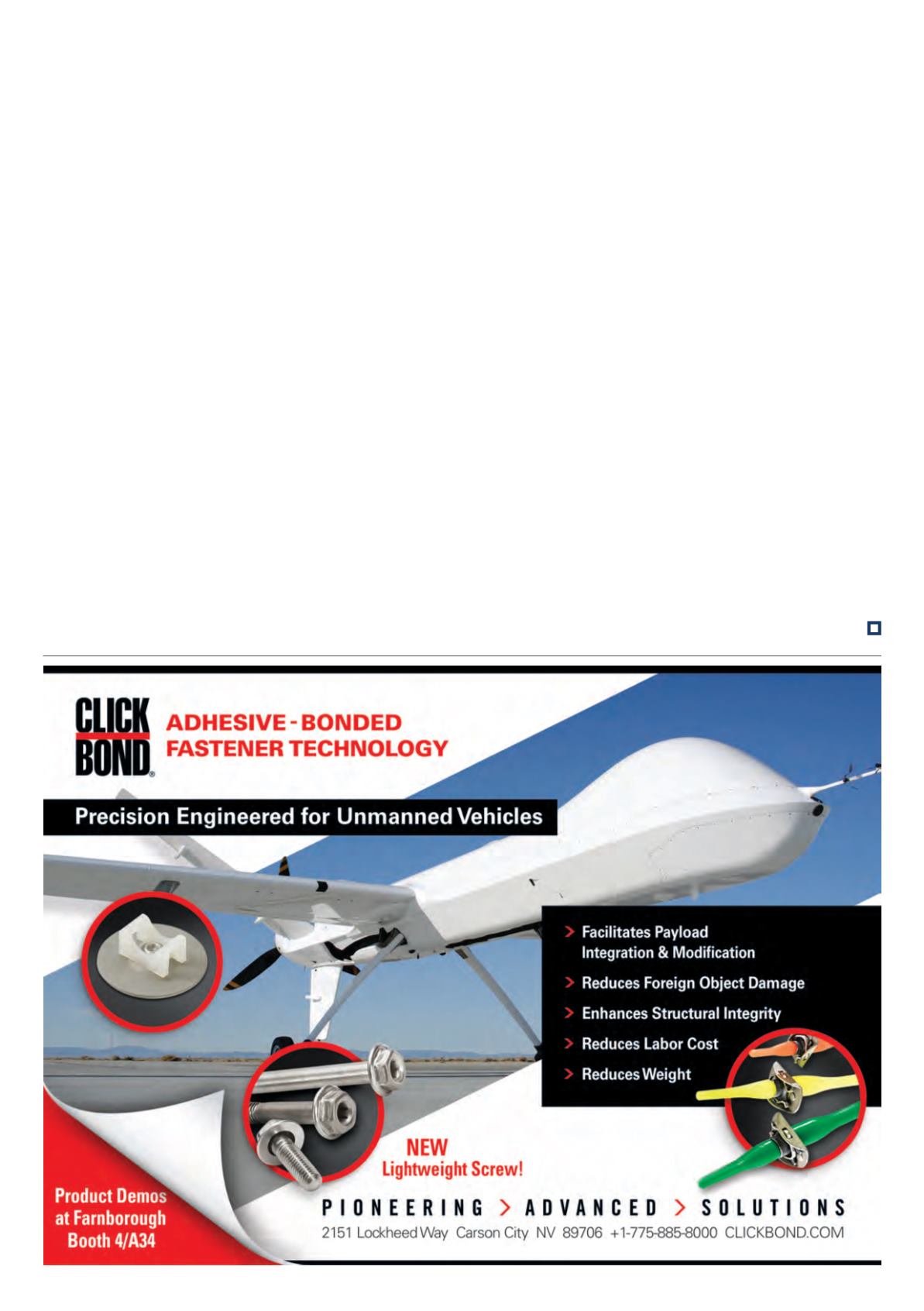

flight test campaign, some changes to
the structure are already planned. The
company is considering extending the
wingspan for clients who need more
lift or greater endurance, which will be
achieved by using larger winglets.
The first prototype had the rear VTOL
motors mounted on the removable tail
booms, but production versions will
have the motors integrated into the main
fuselage mouldings, with the tail booms
inserted behind them. This allows the
main body to be flown as a multi-rotor
craft without the empennage, says de
Villiers. The twin tail booms will therefore
be slightly shorter, starting directly behind
the rear quadcopter motors.
What de Villiers describes as some
minor components and how they will be
mounted are also changing. For example,
the current nose cone is completely
detachable, but in production versions
it will be integrated into the airframe,
with access to the batteries and avionics
systems inside it provided by a hatch
formed by the top half of the nose.
Some changes were considered and
rejected. For example, while manned
helicopters and VTOL aircraft routinely use
short take-off runs to enable them to get
airborne with larger payloads or more fuel,
the Alti Transition forgoes this option. “We
thought initially of adding wheels for short-
run take-offs, but what we are trying to do
with this is pure and simple VTOL. In all
our tests there has not been any need for
a take-off run,” de Villiers says.
Future enhancements
Alti is integrating sensors to detect wind
direction, and is working to enable
the operator to enter wind speed and
direction data before the mission so that
the autopilot will ensure that the aircraft
always transitions between rotor- and
wing-borne flight into the wind before
turning onto its intended course for the
mission or for landing.
Successful development of this
capability might also lead to removing
the rudders, which don’t really come into
play in forward flight, de Villiers says, but
do help during transitions if they are not
carried out into the wind.
The design is also scalable, and the
company is looking to develop larger
variants in the future.
As the Alti Transition is still under
development, production time has not
been pinned down yet, but de Villiers is
confident that it should not take longer
than a week or two to assemble after
the airframe is made, which should take
about two to four weeks depending on
quantities.
He says, “I’ve always had a pretty clear
idea of what I wanted. The shape and
form of the airframe may have changed,
but the Transition is very close to what
I had envisioned – compact, light, with
features and performance unlike anything
else in its class or price range.”









